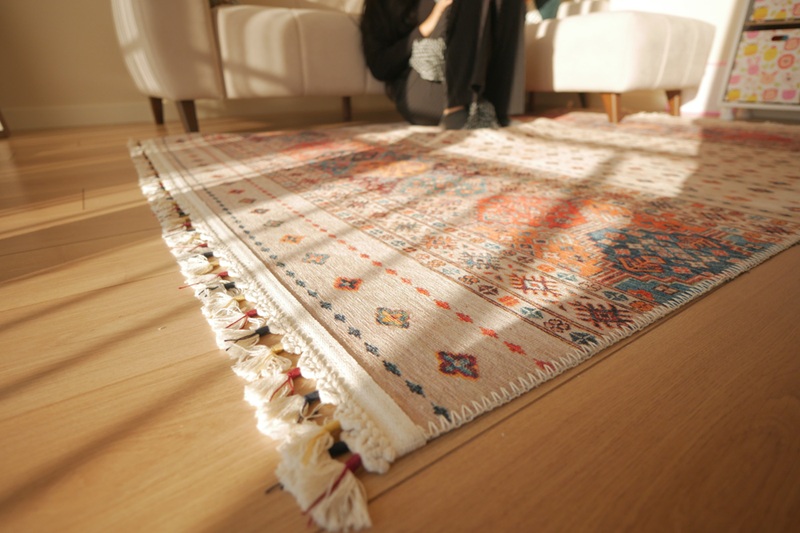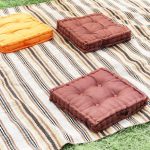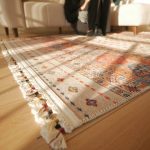Simple Steps to Keep Rugs Clean and Fresh in Living Spaces

Ever notice how a once-vibrant rug quietly dulls under daily footsteps? You’re not alone. Keeping fibers lively is simpler when you break the work into bite-size habits: quick crumb patrols, gentle spot checks, and the occasional deep rinse.
If you’re unsure what a professional clean looks like, you can skim through service photos and tips—simply visit their website for reference—then decide which steps fit your routine and time allowance.
Regular Vacuuming Plan
Think of vacuuming as preventive medicine for rugs; consistent passes remove gritty soil that saws at fibers and keeps colors bright, texture lofty, and allergens under control.
Pick the Right Machine
Choose a vacuum with adjustable suction and a disengaging beater bar so delicate silk or jute stays safe while thick synthetics still get a deep agitation.
Work Both Sides
Flip the rug and vacuum the backing first to shake out hidden sand, then return to the face and follow the fiber’s nap with slow, overlapping strokes.
Mind Edges and Fringes
Switch to the crevice tool near fragile fringes; aggressive brushes can catch threads, so glide lightly or even finish edges with a handheld upholstery nozzle.
Create a Schedule
High-traffic family rooms deserve twice-weekly sessions, while quieter corners manage with weekly care; either way, log reminders in your phone for effortless consistency.
Stop Dirt at Door
Dirt that never enters the room never reaches your rug, so smart entry habits dramatically reduce cleaning time and fiber abrasion all year long.
- Layer doormats: Place a coarse outdoor scraper mat and a softer indoor wipe mat to capture grit from shoes before it scatters across the pile.
- Enforce shoe rules: Keep a bench and slipper basket at the entrance; when footwear comes off immediately, less sand, oil, and lawn chemicals migrate inside.
- Groom pets quickly: A handy paw towel or gentle paw washer removes mud after walks and keeps pet tracks from stamping patterns into your favorite kilim.
- Sweep porches often: Clearing leaves, mulch, and driveway dust means fewer particles hitch a ride on wind drafts or sliding patio doors.
Combine these doorstep defenses and watch vacuum canisters fill with noticeably less debris—proof that prevention always beats exhaustive weekly scrubbing.
Immediate Spill Blotting
When accidents happen, time equals stain depth, so acting within the first two minutes often decides whether a mark vanishes or bonds forever.
Blot—Never Rub
Press a white cotton cloth straight down; lifting motion absorbs liquid upward instead of grinding pigment sideways where it frays and mats fibers.
Work From Outside In
Place your cloth on the spill’s perimeter first, then inch inward; this corral technique stops rings from forming and keeps the blemish footprint contained.
Rinse and Dry Thoroughly
After lifting the stain, mist plain water, blot again, then lay a folded towel on the damp patch with a book on top to wick remaining moisture.
Targeted Spot Treatments
Set up a compact caddy with specialty products so oddball stains—from wine to wax—never catch you scrambling through cupboards hunting supplies.
- Protein stains: Enzyme sprays digest dairy, blood, or pet accidents; apply, cover with plastic for ten minutes, then blot until residue disappears.
- Oil-based spots: Volatile dry-cleaning solvent loosens lipstick, grease, or tar—dab sparingly and ventilate; follow with mild detergent rinse to finish.
- Dye spills: White vinegar solution (one part vinegar, two parts water) helps prevent color transfer before you escalate to oxygen bleach powders.
- Sticky messes: Harden chewing gum with an ice cube, chip away gently, then treat leftover shadow with solvent and gentle soap rinse.
Label each bottle clearly, keep gloves nearby, and you’ll tackle emergencies calmly, minimizing stress and permanent damage alike.
Deep Clean Each Season
Every three months give rugs a spa day; seasonal deep cleaning removes what routine vacuuming leaves behind and refreshes fibers for the months ahead.
Spring Mud & Pollen
After slushy boots and open-window pollen, beat smaller rugs outdoors, vacuum with a HEPA filter, and neutralize salt streaks using mild vinegar solution.
Summer Sweat & Sand
Humidity encourages odor; sprinkle baking soda, wait thirty minutes, then vacuum. For beach sand, flip rug face-down and slowly vacuum backing first.
Autumn Leaves & Spills
Holiday cooking splatters sugar and fats, so schedule a professional wash before winter; it removes sticky residues that attract dust all season long.
Winter Dryness & Static
Indoor heat dries fibers; lightly mist distilled water to raise humidity, brush pile to prevent brittleness, and inspect edges for unraveling fringes.
Natural Odor Solutions
Fresh scents needn’t mean synthetic chemicals; pantry staples safely eliminate mustiness while remaining gentle on kids, pets, and wool alike.
- Baking soda base: Mix one cup baking soda with twenty drops of lavender or peppermint essential oil in a jar shaker for an easy deodorizer.
- Application method: Sprinkle a thin layer, close the room, let the powder sit twenty minutes so crystals absorb odors, then vacuum thoroughly.
- Refresh cycle: Repeat monthly, or sooner after hosting guests or frying aromatic foods, to keep living spaces consistently welcoming.
- Deep stink cures: For persistent pet smells sprinkle zeolite granules overnight; their mineral pores trap ammonia better than simple powders.
The aroma of essential oils fades quickly, yet the absence of odor lingers, proving that true freshness is actually the smell of nothing at all.
Rotate Furniture Layout
Weight and foot patterns carve paths into piles; periodic furniture shifts distribute pressure, slowing premature wear and color fading in exposed lanes.
Quarterly Quarter-Turn
Every three months rotate the rug ninety degrees so sunlight, chairs, and traffic meet new areas, equalizing stress and avoiding permanent traffic lanes.
Move Heavy Pieces
Slide sofas a few inches using felt sliders; releasing compressed spots lets wool rebound and helps synthetic backing vent trapped moisture underneath.
Adjust Lighting Zones
If rotation isn’t possible, swap lamp or shade angles to ensure ultraviolet rays don’t hammer the same dye bands day after day.
Sunlight Refresh Technique
Short, indirect sun sessions deodorize and brighten rugs naturally, but controlled exposure is vital; overdoing it bleaches dyes and weakens fibers.
Choose the Right Day
Pick a breezy morning with moderate warmth; direct mid-day rays are harsh, so aim for early light or dappled shade on a clean deck railing.
Limit the Duration
Two hours per side is ample for killing bacteria and evaporating moisture; set a timer so a phone call doesn’t turn a refresh into fading.
Use Protective Coverings
Lay a cotton sheet between rug and railing to avoid splinters and limit harsh brightness on dark dyes, especially indigo or crimson patterns.
Finish With a Brush
Before bringing the rug inside, quick-brush the pile with a soft broom to realign tufts and shake away dust loosened by sun-warmed fibers.
Proper Drying Methods
Whether after cleaning or an unfortunate leak, fast, thorough drying prevents mildew, odor, and dye migration that can ruin even high-quality pieces.
Extract Excess Water
Press thick towels on both sides, replacing them as they saturate; a wet-dry vacuum speeds removal and reduces overall drying time dramatically.
Create Airflow
Prop the rug over chairs or sawhorses, position box fans on each side, and open windows; moving air, not direct heat, is the safest strategy.
Mind the Padding
Separate and dry the pad independently; damp foam breeds bacteria and can transfer odour back to a freshly washed rug within hours.
Deodorize and Disinfect
Lightly mist isopropyl alcohol to kill lingering microbes on synthetic fibers; for wool or silk, stop at airflow and consult professionals for safety.
Use Protective Rug Pads
Think of a pad as insurance: it locks rugs in place, cushions steps, and guards floors from scratches while extending your investment’s usable life.
- Enhanced safety: Non-slip rubber backing prevents dangerous skids on hardwood or tile, especially beneath hallway runners and nursery play mats.
- Dirt capture: Textured felt traps grit that would otherwise grind into knots, making each vacuum pass more effective and less abrasive.
- Longevity boost: By absorbing shock, pads stop yarn breakage at pressure points where heels or furniture legs repeatedly land.
- Floor protection: Stable cushioning blocks rough backings from etching fine finishes and keeps spills from seeping onto expensive planks.
Trim the pad three inches smaller than the rug on all sides for a concealed fit; sharp scissors and a straightedge make quick, tidy work.
Freshness Secured
By sticking to these straightforward habits, you reduce wear, control odors, and extend each rug’s life. Should stubborn grime persist, compare your handiwork with the expertise outlined in Rug Wash Specialist’s rug cleaning guide to decide whether a deeper professional treatment is worthwhile for your peace of mind.






























